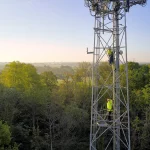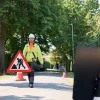Openreach Delay UK Launch of Ethernet Access Direct 2.0 Until Dec 2026

Network access provider Openreach (BT) has notified UK broadband ISPs of a 9-month delay to the planned launch of their new Ethernet Access Direct (EAD) v2.0 product for businesses, which appears to have been prompted by Ofcom’s current Telecoms Access Review 2026 (TAR). The move means that EAD 2 won’t become available until the end of 2026.
The EAD product is one of the operator’s most familiar Ethernet services and provides point-to-point data connectivity between sites (leased line). The service can be used to build and extend customer networks, develop new infrastructure, and meet network backhaul (capacity) requirements up to 10Gbps. But EAD is not a totally static product and has evolved a bit over the years, although EAD 2.0 aims to go much further.
Much as we first reported back in 2023, the EAD 2.0 product is expected to support various improvements. Some examples include new intermediary speed tiers (e.g. 2Gbps, 3Gbps), greater resilience, the ability to remotely upgrade bandwidths (assuming ISPs have the right optical kit installed) and it will seek to adopt a passive demarcation device with an inbuilt reflector (they currently use an active NTE that uses power).
Advertisement
Communication providers can also expect lower port costs, as well as lower space and power costs, among various other changes (summary). But provision and repair times seem unlikely to experience any radical changes, although all of this is tentative and thus still subject to some change.
Until recently we had been expecting EAD 2.0 to be launched next Spring 2026, but ISPs were this week notified of a 9-month delay – pushing it back to around December 2026. Openreach says this will give them the opportunity to further test and refine EAD 2 ready for its full launch. But the operator also blamed Ofcom’s ongoing market review, which is proposing changes to the leased line market definitions, its pricing and non-pricing remedies – these would apply from 1st April 2026.
In short, Openreach appear to be seeking some certainty before letting EAD 2.0 out into the wild, not least as Ofcom’s decisions may require new system capabilities (i.e. they’d need time to develop and test those). But this won’t impact the operator’s current plan to launch a 6-month phase 1 pilot of the new product in September 2025.
Speaking of the TAR, we didn’t see too many grumbles about EAD from rival providers, although Vodafone did talk-up the possibility of a “shrinkflation risk” with EAD 2.0 in their submission (i.e. when a product’s size / features are reduced while the price remains the same). But judging this is difficult before the final pricing is known, which may become easier once their pilot kicks off in a few short months.
Advertisement
“We have provided Ofcom with detailed information about how, during the course of market reviews, Openreach has altered the product offered, in effect shrinking its offer. Put simply, Openreach is currently able to charge more and deliver less,” said Vodafone, while worrying that the same accusation might befall EAD 2.0. Time will tell.
Mark is a professional technology writer, IT consultant and computer engineer from Dorset (England), he also founded ISPreview in 1999 and enjoys analysing the latest telecoms and broadband developments. Find me on X (Twitter), Mastodon, Facebook, BlueSky, Threads.net and Linkedin.
« BT Faces Formal Trade Dispute After Union Rejects Pay Offer






















































Interested to see how the CPE can be passive. Assuming single fibre working using bi-directional SFPs utilising CWDM lightwaves, the end user is likely to require a 2 fibre working client port at either 850 or 1310nm.
Tell me you Googled this while not telling me you Googled it. 850 is multimode fibre territory with range in the hundreds of metres. Openreach do not use multimode in their access network.
Which is why I said on the client port, sounds like you’re the one who hasn’t got a clue….
Very well, and fair that was overly harsh and I apologise wholeheartedly. What’s a ‘client port’ in your mind?
If it’s the port on a customer router it could be using anything as it’ll need an active device to talk to, can’t go straight into a passive device expecting it to convert duplex fibre which uses same Tx and Rx wavelength to simplex BiDi.
Passive devices can only filter, split and combine. Changing wavelength needs active equipment.
Potentially they’re going fully wires only and presenting a simplex fibre port instead of requiring their own NTE. Switch on their side of the link handling rate limiting and holding the transceiver. 10GBase-BX optics are pretty cheap.
When providers put equipment at a customer, they generally have a line port and a client port.
The line port will have often have something like a CWDM/DWDM SFP, or a BiDi SFP in the case of the current EAD setup. Bearing in mind EAD stands for Ethernet Access Direct, so they are point to point direct, without going through other equipment, which is why there is a distance limit. Long haul stuff will likely utilise DWDM, possibly with spare capacity for if other circuits are added in future.
When ordering the customer requests either 1310 or 850 presentation on the client port, so I can’t see how an EAD can be passive, they’ll need some sort of active equipment to present either 1310 or 850 to the customer, and also to give them management as it’s sold as a managed service.
Understood. Apologies again for being such a tool.
The passive demarcation point has a reflector in it that is presumably mechanical and in place if no customer cable is plugged in, Openreach can use that for looping to test the optical path.
Rest it’s a wires only service between handover and premises with the CP managing and monitoring. They provide active NTE or give their customer wires only. Openreach side a switch and they’ll deliver customers to the CP over VLANs and cablelink. No more one EAD in, one port on CP hardware required.
That takes care of the connection to the handover point. Rest where it’s remote to remote Openreach have existing networks that can carry Ethernet between their exchanges with the same passive demarc either side.
That was the last I heard on it. CPs wanted a wires only product that looked similar to the ones they could purchase in metro areas from Neos etc.
Another delay and yet again under the banner of “not ready” and “more trials”. At what point do we acknowledge that Openreach’s slow pace to roll-out has actively held the UK economy back?
We’ve already missed the bus on the AI and digital innovation race. Countries with widespread symmetrical fibre and true FTTP rolled out years ago are scaling start-ups, building data-intensive services and powering their economies forward.
Yes, leased lines were an option, if you had deep pockets. But for the majority of start-ups, SMEs and innovators, the pricing has always been exclusionary. The lack of accessible high-speed upload capability is still a massive barrier to cloud computing, IoT, real-time collaboration and yes, AI development.
It’s not just about streaming video or faster downloads, it’s about whether we’re serious about a modern digital economy. Right now, we’re not acting like it.
Leaving aside the actual value of most of these “startups” and the alleged “AI boom”:
The UK’s telecoms market makes the US look like Soviet era Russia in terms of price, performance, competition and availability, yet they seem to have no problems “innovating”. All those power hungry data centres aren’t running off GPON or even XGSPON.
Isn’t IoT supposed to be low bandwidth comms? What’s fibre got to do with this? I’ve participated in many a video call without gigabit symmetric.
All vaguely relevant if Openreach were the only network provider in the UK, and if you ignore countries like Germany and the USA who are far behind us in network performance and availability but ahead of us economically.
@Jack – the UK has had a open telecomms market for nearly 40 years so why do you just grumble about BT?
Why not ask about Thus, Cable & Wireless, Telewest, Virgin Media, Energis, Colt etc.? Virgin Media cover greater then 50% of properties and are only now rolling out FTTP and replacing the old technology. Why if there has been such a demand unfulfilled?
@Jack – the UK has had a open telecomms market for nearly 40 years so why do you just grumble about BT?
Why not ask about Thus, Cable & Wireless, Telewest, Virgin Media, Energis, Colt etc.? Virgin Media cover greater then 50% of properties and are only now rolling out FTTP and replacing the old technology. Why if there has been such a demand unfulfilled?
As I said before “BT/Openreach: Holding back the UK for years….”, trial, trial, pilot, delay…..
Wouldn’t normally agree with VodaF, as equally despised, but they are probably correct in what they say. I mean, look at the residential services, symmetric upload coming (eventually, some year) but sliced into tiers so they can look like they are offering it, but reality is the pricing will mean majority could only afford the lowest speed tier, whilst competition aka ALTNETS just have one tier of matching the line rate in most cases at reasonable pricing.
The story explains the delay. Can’t say I agree but none of it remotely related to your fixation with Openreach FTTP upload. If you charged Openreach rent for living in your head you’d be able to build a network putting CityFibre to shame in no time.
Most of the AltNets will not survive the next ten years, so I would not rely on their price modelling.
Let’s hope they do. I don’t want the cartel milking culture of Brokenreach or Vermin Media. Two dinosaur companies that have more than had their day, and should have been put down by now.
Polish Poler, your obsession with defending anything BT is also worrying.
If BT/Brokenreach delivered symmetric, at sensible pricing and not slices of expensive tiers (most likely predicted model) they’d not be a comment. Oh wait, legacy GPON still being deployed that would struggle, let alone their conscience. Deliver what the competition is delivering would be a start????
@anon – the ties are at the wholesale side. ISPs can choose which to offer to their customers. Symmetrical is not needed by the majority of home users.
I didn’t defend anything. I said the story explains the delay that was all.
Complaining about fixation when both your initial post and your response to me are raving about something totally irrelevant, the same thing featuring in nearly every post you make, is a bit rich, don’t you think?
When I’ve had DIA circuits in the past using Openreach as the bearer, they never reclaim the ADVA at the conclusion of the contract. The commercials are obviously good enough that they can afford to write-off the cost of the NTE. Many just end up on eBay as a consequence
That’s because it’s built into the £1500 setup fee that Openreach charge the CP when the circuit is provided.
I’ve sent 100’s of ADVA’s to a recycling company over the last few years, OR just arn’t interested.
Let’s be fair this is just the normal for Openreach now, trials after trials, delays after delay. like just launch the products or you’ll get eating out of market shares
No. As a customer of Openreach they are doing exactly the right thing. Their products have to work properly because at the scale they roll out at an undiscovered problem would quickly become catastrophic.
Most of the trials are to ensure that other operators’ systems are able to order, be billed, report faults and so on. OR can’t be discriminatory and so they must ensure the product works for all potential customers before launching. Imagine the uproar if they launched a product that BT could easily consume but that didn’t work for Sky or TalkTalk.
There’s a reason that the PSTN has an uptime of over half a century. That the 21CN Ethernet network has never failed. That no-one has succeeded in a cyber attack against OR’s broadband network. And it’s the opposite of ‘just launch it’.
@125us
“That the 21CN Ethernet network has never failed”
Yes it has and so have parts of the PSTN network too
@ISP-Engineer: Though all assets are subject to failure, the core networks have not gone down in their entirety.